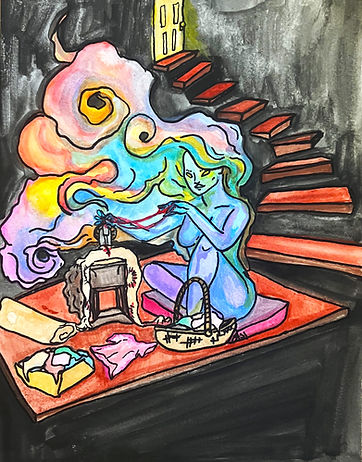
How Trauma & Grief Shape us
Imagine if you will that humans are like clay, our every day experiences the hands that shape us into who we are. Now picture that a rock has gotten mixed into your clay somehow. This lumpy uncomfortable experience now sits in your body forcing you to adjust how you move about your daily life. Soon enough you forget the rock was even there and go about life as "usual" all the while still accommodating for the rock.
Much like the rock trauma also sits in our bodies. Compensated for subconsciously changing the way were interact for better or worse.
Trauma responses in the body

Our bodies like our minds have a memory. Each experience we have forms a road map of stress, excitement, pain and pleasure. We as humans tend to avoid the less pleasurable parts of our map at all costs. Avoiding memories and emotions that have a negative affiliation. When we repress our emotions like this our body finds ways to remind us that pain is still there. This can be in the form of a chronic illness, insomnia, migraines and even hair loss.
How does one release stored trauma?
You're probably wondering where should I even start? Worry not! While it can be overwhelming to face things head on we are lucky enough to live at a time where one has many avenues to choose from.
Over the decades researchers have discovered many types of therapies that are proven to help release stored trauma. Most of us are familiar with the concept of therapy as sitting in a room with a stranger that helps you unpack and decipher your life events and how they are effecting you now. While this is a tried and true method that helps millions of people every year it is far from the only form of effective therapy.
Art Therapy

Art therapy is a type of psychotherapy that approaches healing through creative expression. This can be accomplished through a wide range of mediums from painting to sculpture and even knitting. The object of the therapy is to encourage spontaneous self expression. Art therapists are licenced professionals who foster a mind set of healing through a creative approach.
Cognitive Behavioral Therapy
Cognitive behavioral therapy is a psychotherapy approach that focuses on the effect our negative thoughts can have on our psyche. This approach is often used to improve the symptoms of mental health conditions such as PTSD, anxiety disorders and depression.
In CBT the therapist helps patients reframe their way of thinking. By identifying thought patterns and the way they are affecting the patient. Therapists can then help curate a tool kit of coping skills and positive thinking.
Dance/
Movement Therapy
DMT or dance/movement therapy focuses on building a mind body connection. Using movement as a way to foster social, emotion and physical oneness within an individual.

EMDR Therapy
Eye movement desensitization and reprocessing is a type of psychotherapy that helps reprocess traumatic memories through bilateral stimulation i.e moving your eyes from side to side. This can help alleviate the emotional impact of certain memories.


